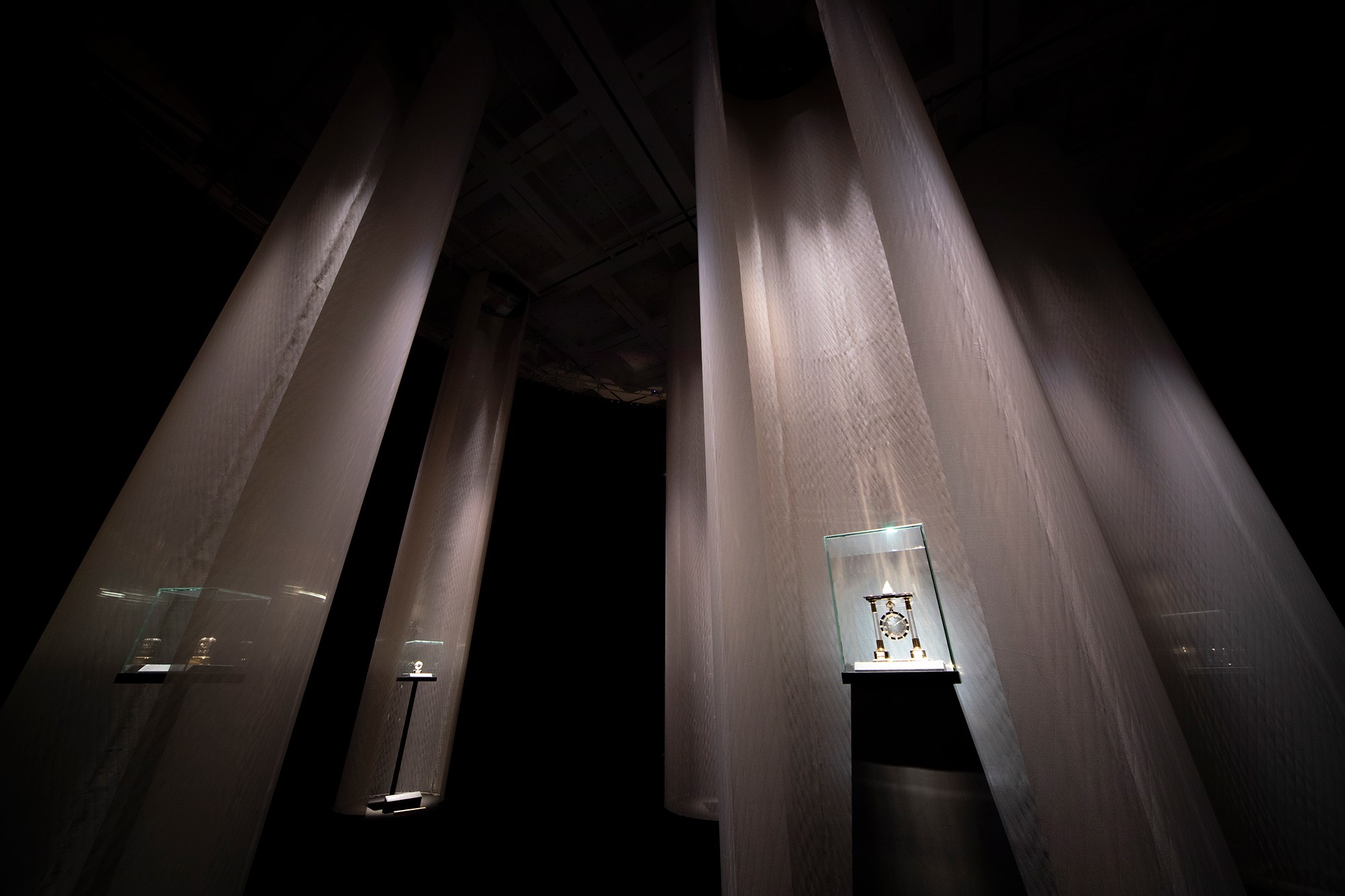“Cartier, Crystallization of Time”, an exhibition that delves into Cartier’s world of beauty is presented at the National Art Center in Tokyo from Wednesday, October 2nd. In September, we interviewed Hiroshi Sugimoto and Tomoyuki Sakakida from “New Material Research Laboratory”, the architectural firm which designed the layout of the venue that makes the visitors to wander through “time”.
The Aesthetics seen from the Balanced Space
When the people of Kyoto uses the phrase “at the last war”, it often refers to the Onin War which occurred during the 15th century. When the goldsmith of Florence mentions the phrase “this sample of gold-work”, it refers to the book of portrait painting from the Renaissance period. How far back in time should we have to look, in order to discover the origin of “Cartier, Crystallization of Time”.
The exhibition takes a distinctive approach in design, analysis and integration, while expressing Cartier’s innovation and creativity that led to build their current presence over time. The question of origin is answered through the astonishing equipments and installations. Visitors can freely wander through the space and open a dialogue with the clocks and jewelleries displayed in chronological order. The display arrangements may seem quiet and calm at first, but they are carefully balanced with the refined style of Cartier based on the artistry of Japanese aesthetic. We visited Tomoyuki Sakakida from New Material Research Laboratory (NMRL) to hear about the design layout for the venue which took more than three years since requested.
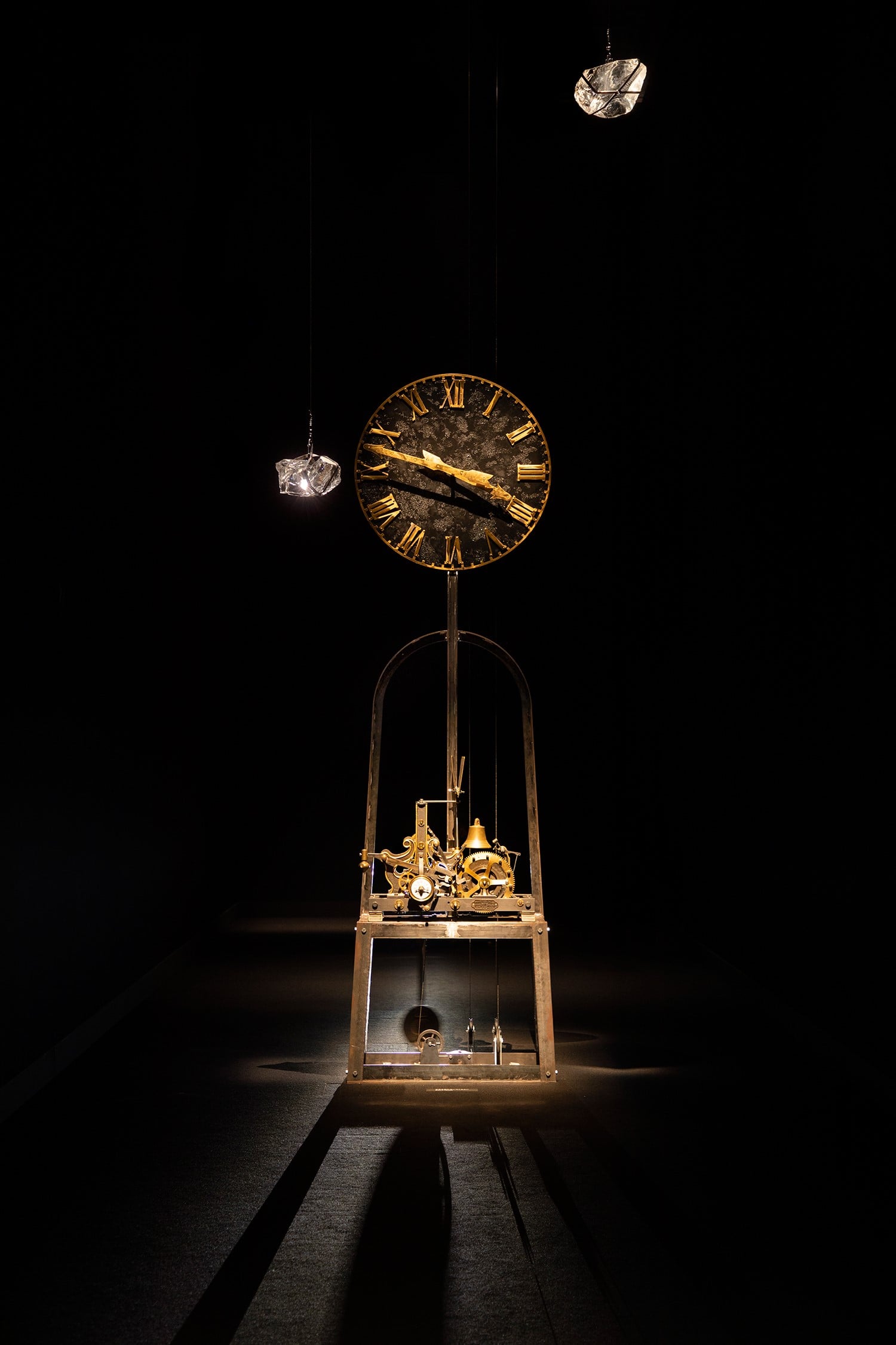

Hiroshi Sugimoto’s “Time Reversed” appears in front of the visitors after entering the exhibition. The work is a mixed media of restored antique clock from 1908. The clock was altered to turn counterclockwise by Sugimoto. [Manufactured by Fontana Cesare, Milan] Private Collection
Hiroshi Sugimoto, Time Reversed, 2018, Mixed media (Restored antique clock from 1908 altered to turn counterclockwise by the artist [ Manufactured by Fontana Cesare, Milan]) Private Collection
© Hiroshi Sugimoto/Courtesy of N.M.R.L.
On the wall next to the windows were numbers of traced necklace designs displayed with the Cartier logo on the bottom center. The exhibition images were placed on the table with the torsos carefully hand-carved by the Busshi, a sculptor specialized in Buddha statues. The torso uses Japanese woods such as Jindaisugi, Yakusugi and Jindaikeyaki, each torsos are uniquely designed to match with each Cartier necklace. The patterns of the wood creates the calm waves on the torso, allowing the visitors to feel the wood’s massiveness and magnificence.
“NMRL presented their design for the venue through their concept of ‘The future is shown by tracing back in time’. It was the matter of where to put the emphasis on”, explains Sakakida. NMRL is an architectural firm founded by Hiroshi Sugimoto in 2008, together with Tomoyuki Sakakida, partner architect and director of NMRL. Through Sugimoto and Sakamoto’s principle of “Traditional material are the newest”, they produce a new Japanese aesthetics of giving a unique depth to the modern architect with traditional materials and techniques.
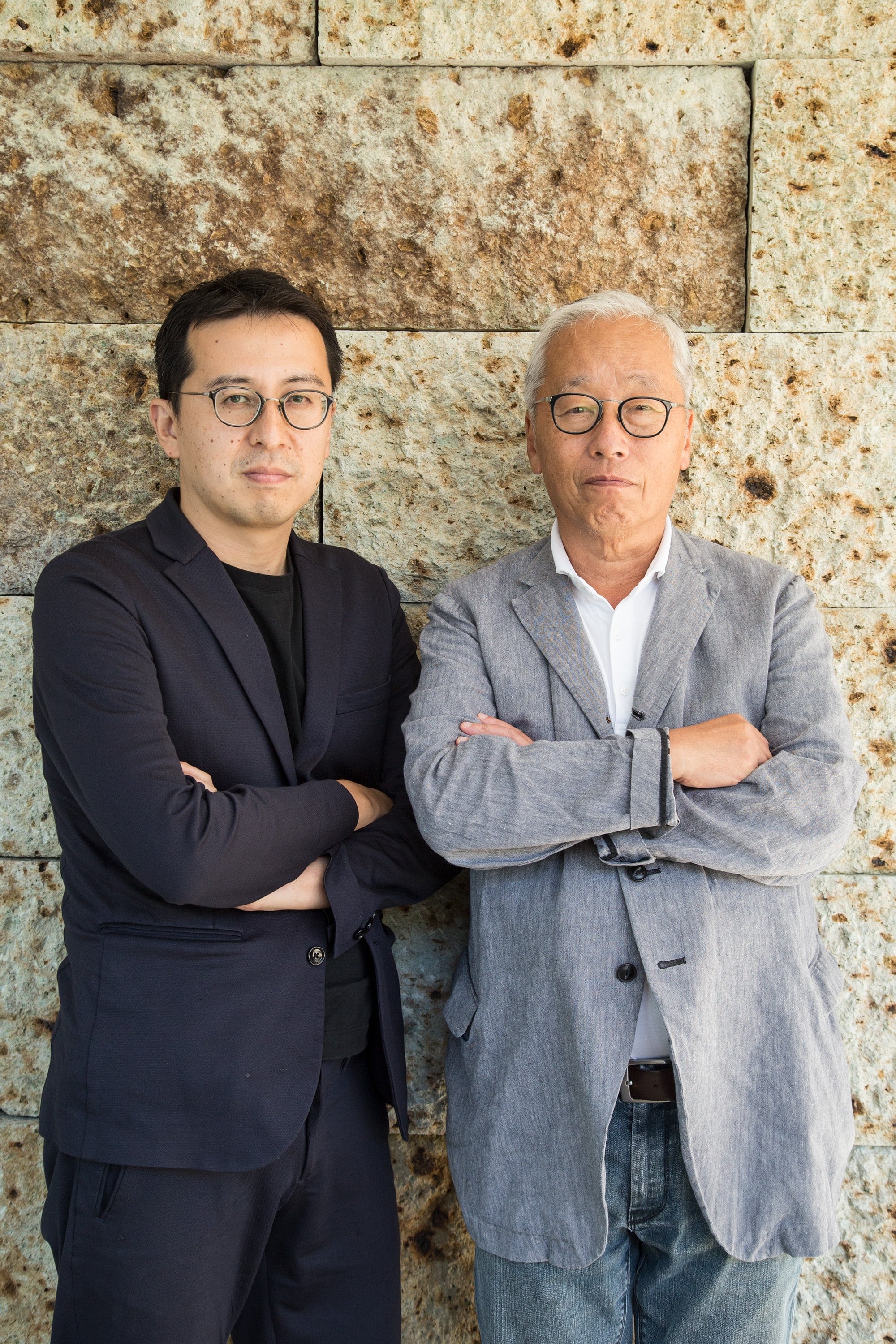

Hiroshi Sugimoto (Right) and Tomoyuki Sakakida (Left). The wall stone behind the two is the Oya Stone from Enoura Observatory.
“Sugimoto knows that something new can be discovered by stretching the scale of history. By taking the 170 years history of Cartier to 4.6 Billion Years when the earth was born, he was able to deepen Cartier’s intention of showing the present and future since the 1970s”. One of the highlight of the exhibition is the contrast between the beauty of the jewelleries and the layout of stones, woods, soil and fabrics.
“By stretching the scale of time, the search for gemstones under the ground ends, and allows the people to recognize the jewelleries as a miraculous rock which crystallized over hundred millions of year. By setting the stones and woods together with the jewelleries, “Time” can be seen from the engraved stone rift and growth rings. The contrast of simple materials and jewelleries enhances the beauty in both” explains Sakakida.
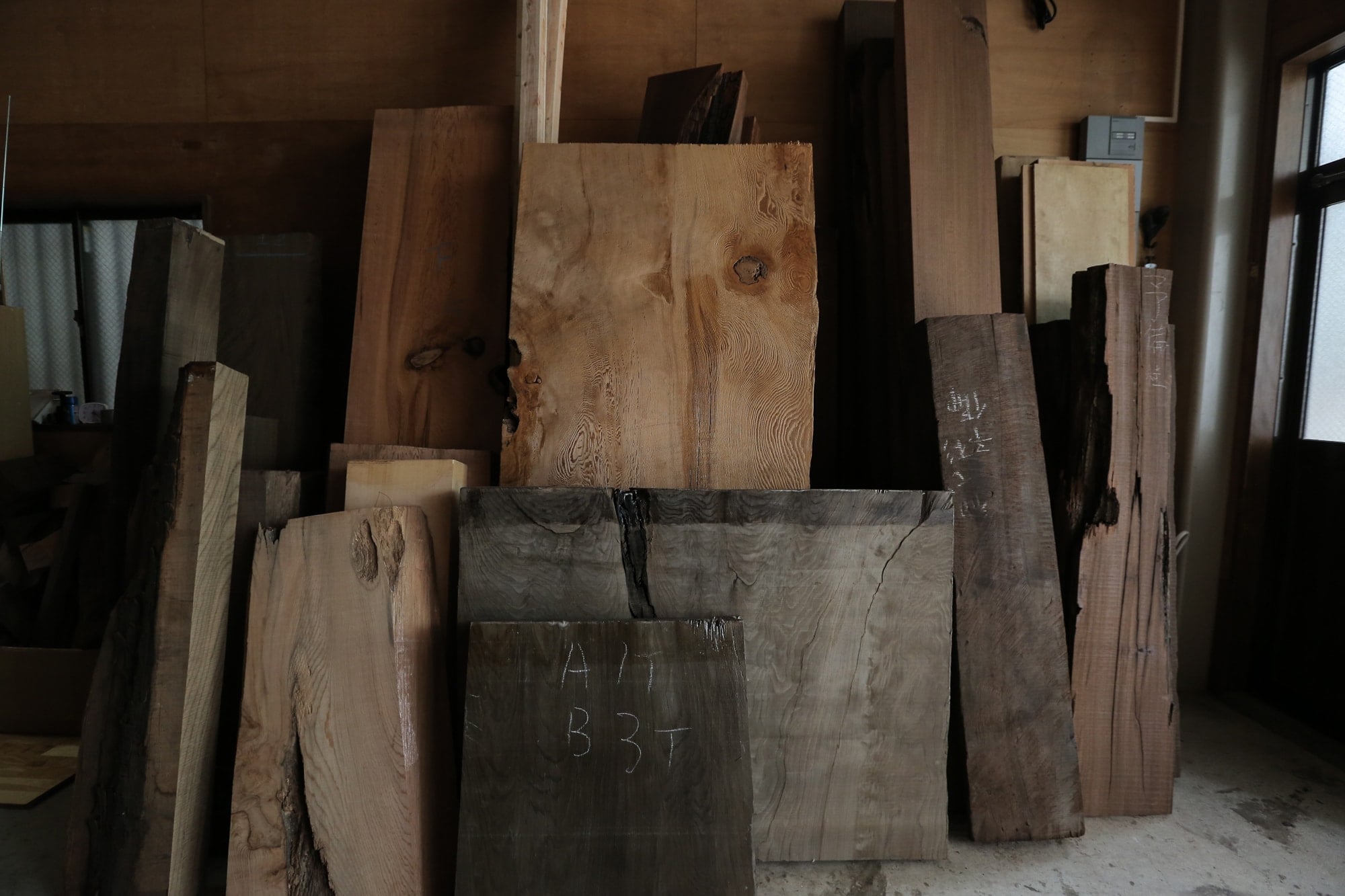

The Japanese woods with layers of growth rings are prepared for the exhibition.
Photography by Ruriko Kusanagi
NMRL focuses deeply on materials such as Japanese woods and stones, since these materials can adjust to the climate in Japan. The firm mainly use coniferous trees for wood and tuffs for stone. The material which is necessary for the NMRL architect is the Oya stone, which appears in blocks assembled in double cross formation.
“Oyo stone is a soft stone which can be cut using a saw. The stone is porous and the surface is full of expression created by the lava activity. The period of time can be observed from the stone. By simply communicating with these primitive aspects, an interaction between the person and material begins” explains Sakakida. As a new approach for the exhibition, a fabric called “Ra” was used. The fabric was developed by Kawashima Selkon Textiles Co., Ltd., a textile company founded in Kyoto’s Nishijin area and renown for restoring the textiles for the Shosoin treasure house. Two fabrics were developed for the exhibition to express the darkness and light, a deep dark fabric for the black curtains to express the subterranean, and another fabric with transparency to express the pillars of light. A traditional technique called Hikipaku was applied to give the glittered look to the transparent fabric and the form of Futsuori (double weave) was applied to give color gradient to the light.
The way how these materials match with jewelleries and clocks can only be experienced at the exhibition, but the Cartier’s collection which is the core of the exhibition allows the visitor to see the brilliance and their eternal world. Once seen, the visitors cannot forget about the mystery clock and prism clock at the “Prologue” space.
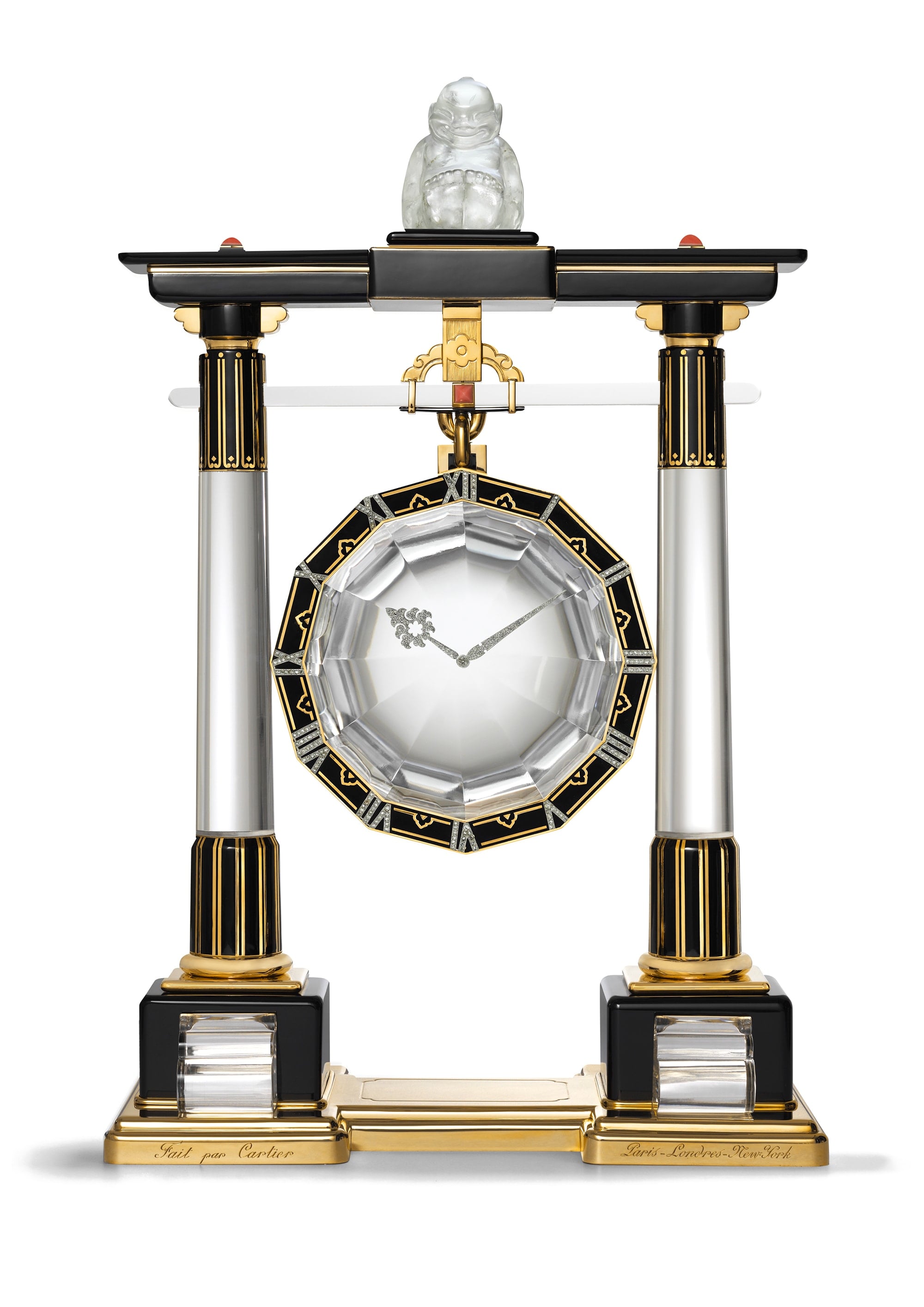

”Large Portico Mystery Clock” Cartier, Paris, 1923, Gold, Platinum, Rock Crystal, Diamond, Coral, Onyx, Black Enamel Cartier Collection
Marian Gérard, Cartier Collection © Cartier
A century have passed since the mystery clock was created by Maurice Coüet, a 28 year old clockmaker working for the Cartier workshop during the 1920’s. Even if we knew the mechanism, we are still deceived by the two clock hands floating within the crystal casing. The rotating hands are affixed on the transparent crystal discs and rotates together to mark the time. From the simple models to the exotic oriental decorated models, one cannot easily figure where the movement is set. The 12 mystery clocks are set inside the pillars at the “Space of Time”. While fulfilling the curiosity of the visitors, the exhibition’s ”Prologue” fits to the theme and surely be the most impressive part of the “Cartier, Crystallization of Time”.
“Cartier, Crystallization of Time”
Date: Wednesday, October 2nd, 2019 to Monday, December 16th, 2019
Location: The National Art Center, Tokyo Special Exhibition Gallery 2E
https://Cartier2019.exhn.jp
